Red Menace Reviewed: Or How I Learned to Stop Worrying and Love the B-58 Hustler
Dr. Strangelove is my favorite film of all time. While a grim satire of nuclear war and the dangerous consequences of nuclear weapons, it’s hard to deny it: being a B-52 guy in the late 50s and early 60s seems awesome. I’ve played board wargames for about fifteen years, and when I heard that Red Menace was about commanding B-52s in “Nuclear combat, toe-to-toe with the Russkies,” I jumped at a chance to play. is a production by Battlespace Games- an indie shop with a few titles, all available through their . The creator, R. Brent Ward, described it as being not 100% realistic, but more about the feel of the era—in that capacity, I think he nailed it.The game simulates nuclear war in 1959—this is before the massive ICBM fields that came to dominate in the 60s and 70s, and instead focuses almost entirely on the bomber fight, though both sides do have submarines with ballistic missiles (which is a bit of a fudge—the Polaris didn’t hit Initial Operating Capability until 1961, but that’s alright—I’m not going to turn down nuclear help). A game in progress– US bombers launched towards the USSR as the first Soviet planes get ever closer to the US.
A game in progress– US bombers launched towards the USSR as the first Soviet planes get ever closer to the US.
Instead, the action is primarily massed bombers coming over the North Pole.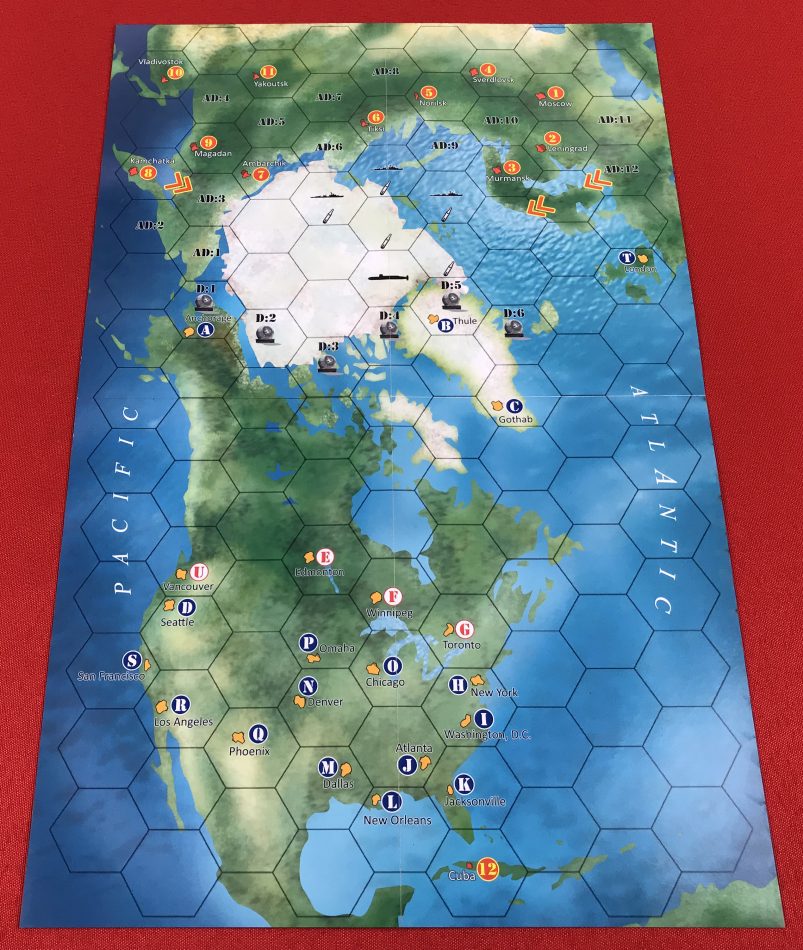
I played through the VASSAL module, available from Wargame Vault. I was impressed by how smooth the VASSAL module is—the developers put a lot of care into transferring the pieces onto digits. There are some bumps—I’m not a fan of having to manually “increase/decrease” on the Primary Target counter, where if I was playing the hard copy, it’d be easier to just write the letter. Even with the keyboard shortcut, this got a little annoying to scroll to the middle of the alphabet.
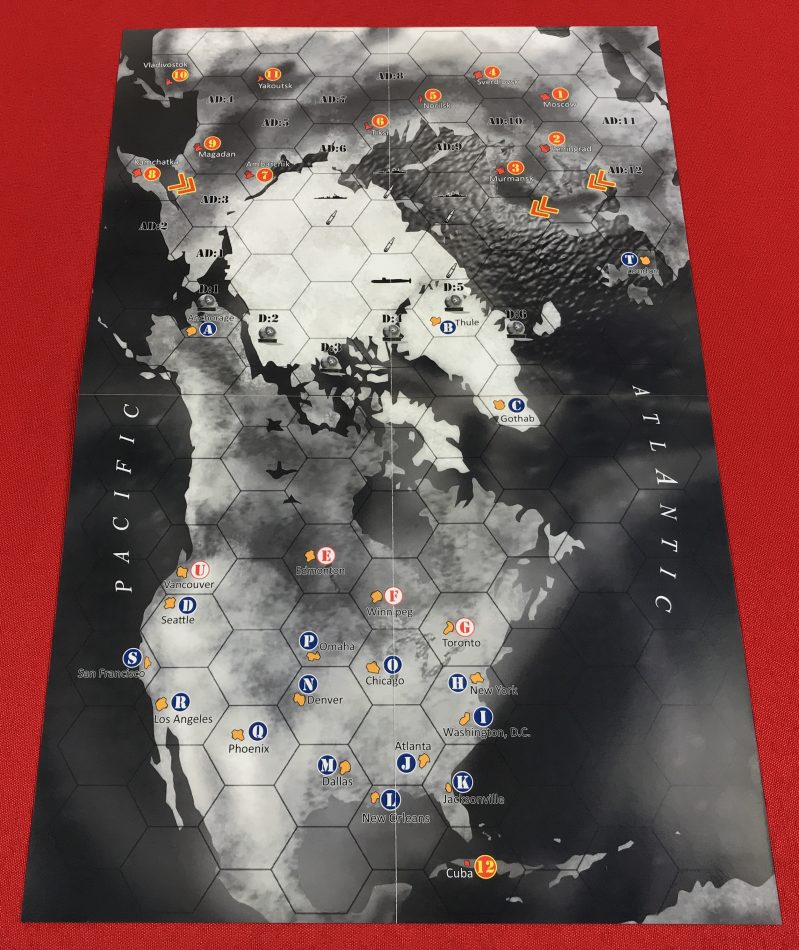 The artwork is great. It’s smooth and streamlined, and very much exudes a mid-century airpower vibe.
The artwork is great. It’s smooth and streamlined, and very much exudes a mid-century airpower vibe.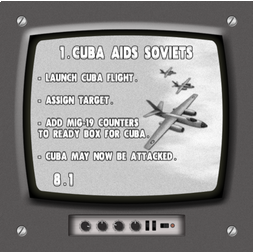
There’s a lot of phases in this game. I had expected a 15 phase game to be complex but was pleased to find that it’s actually pretty straight forward—only five or six phases are “Every turn,” the rest are conditions-based (i.e., interceptors only intercept targets that come into their AO—no bombers over cities, no interceptor scramble).
The individual bombers all feel different. B-47s are the weakest American entry—not as survivable as the B-52 or as fast as the B-58, but still capable of reducing a city to ashes. The B-52 is midgrade, with a small survivability bonus (I’d like to imagine due to the tactics performed by Major Kong in Dr. Strangelove), while the B-58 is high-end. As a fan of the B-58, almost entirely for aesthetic reasons, I was pleased to see it feature as the American heavy hitter!
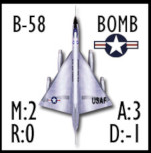
On the Soviet side, the game has the “Bear” (Tu-95—one variant with first-generation cruise missiles), the “Badger” (Tu-16), the “Bison” (M-4), and potentially the “Bounder” (M-50).
 I really like that Brent went out of his way to include a lot of unusual 2nd Generation and 3rd Generation jet aircraft concepts—such as the Canadian Avro Arrow, the Soviet M-50, and the British Vulcan. These systems are underrepresented in games—in part because only the last one was actually fielded, the other two never made it past the prototype phase.
I really like that Brent went out of his way to include a lot of unusual 2nd Generation and 3rd Generation jet aircraft concepts—such as the Canadian Avro Arrow, the Soviet M-50, and the British Vulcan. These systems are underrepresented in games—in part because only the last one was actually fielded, the other two never made it past the prototype phase.
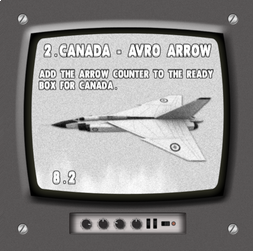
The overall gameplay is best described as cinematic in nature. It’s a strategic level game, as all games of nuclear war are. Each token has a few key stats—the big ones are movement, range, and attack. Faster aircraft, such as the Hustler or Bounder, have a bonus to defense.
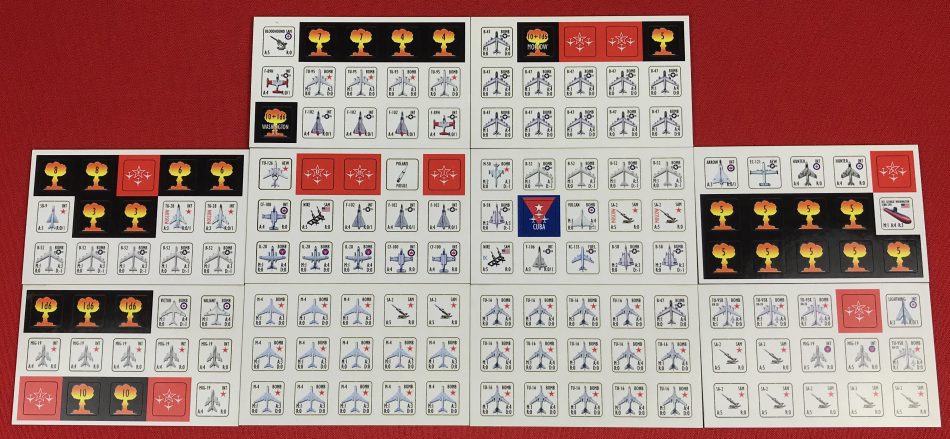
The primary adjudication system in the game is a roll of a d6 for any individual resolution. This makes the game quick to play, and the math relatively easy to calculate for expected results. I’m a bit mixed on whether or not I like this compared to a d10 system, which would’ve allowed for more differentiation between systems (as it stands, the SA-2, Bloodhound, and Nike SAMs are all basically just reskins of one another—while logical for first-generation surface-to-air missiles, it still seems a bit off to me), but considering how much the game has the player juggling, there isn’t anything bad about the d6 system, and it helps rapid resolution when you have to figure out multiple nuke rolls against the same target.
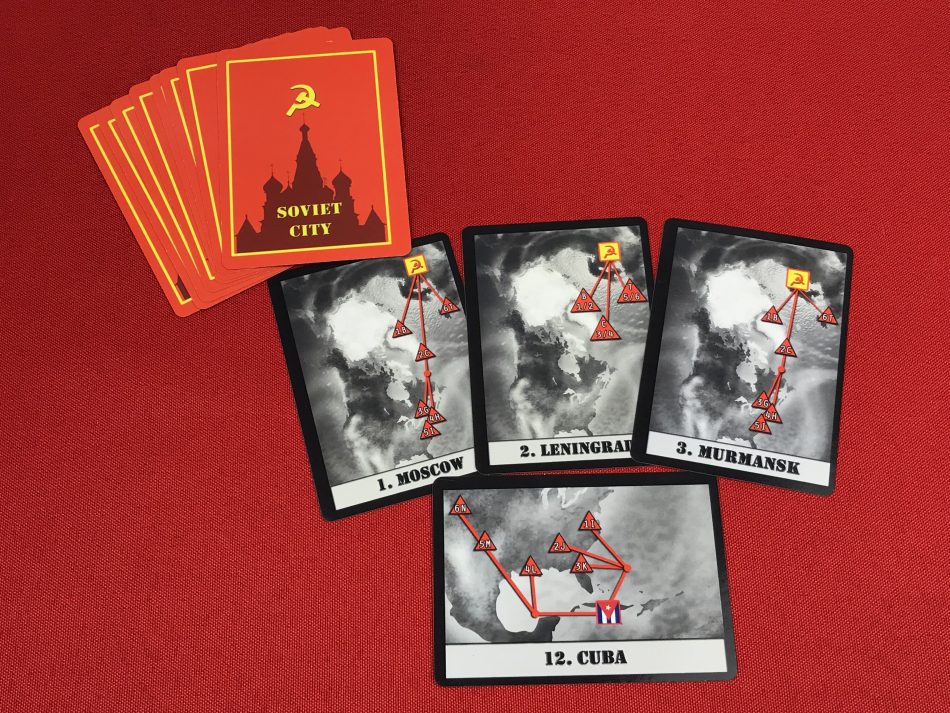 Interceptors are only played defensively—anchored around cities. When an enemy bomber enters a city hex (or one hex away, if you commit a long-range interceptor), you can choose to ready fighters against it. I used a 2:1 ratio and had pretty good results.
Interceptors are only played defensively—anchored around cities. When an enemy bomber enters a city hex (or one hex away, if you commit a long-range interceptor), you can choose to ready fighters against it. I used a 2:1 ratio and had pretty good results.
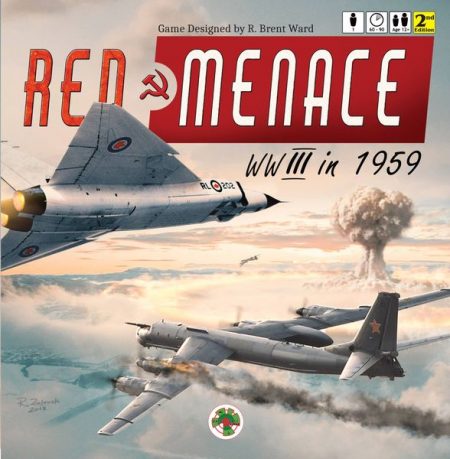
My favorite part of the design is the Soviet bomber map. Soviet flights are generated with a number from an airbase near any Soviet city still standing. The player then rolls a D6 to determine their target. Not all Soviet cities target all American cities. This can lead to some odd targeting (I had multiple enemy flights targeting Edmonton, while only one targeted Omaha, the headquarters of Strategic Air Command, and the only two that targeted D.C. were set by the scenario), but it keeps the replayability high and makes it difficult to plan against. Essentially, depending on their targets, this can lead to bombers massed over a few targets, or spread thin, which makes assigning interceptors a challenging task. If the bombers’ primary target is destroyed before they get there,
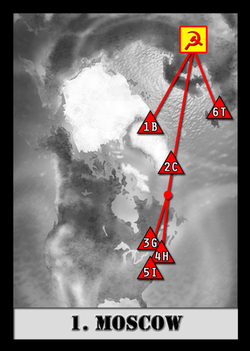
Equally important—the bombers in each flight are randomly generated. The player won’t know for sure until the Soviet flights cross the DEW line—and several targets, including London, are outside that line.

I’m not certain on the overall difficulty of the game. I won my sample game (which a battle report will follow), but how much of that was due to lucky rolls and comparatively easy assignment of enemy bomber packages, I am not certain. This means I’ll likely play again.
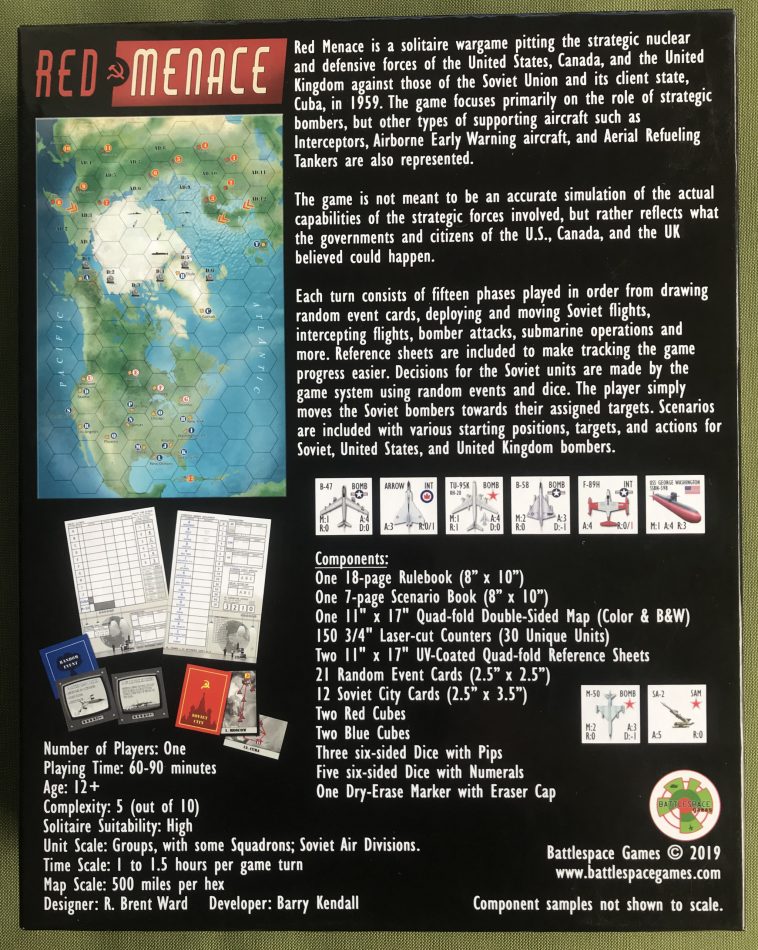
For what I’d like to see going forward:
-A two-player variant. This game is a great solo. I think it would be good as a two-player game as well, sort of a way to teach folks the ABCs of mid-century nuclear war.
-Another game with a similar engine in the ICBM era. It wouldn’t be able to be a 1:1 translation, owing to the fact that ballistic missiles in this game are a simple roll, but I think it would be doable.
SCORE
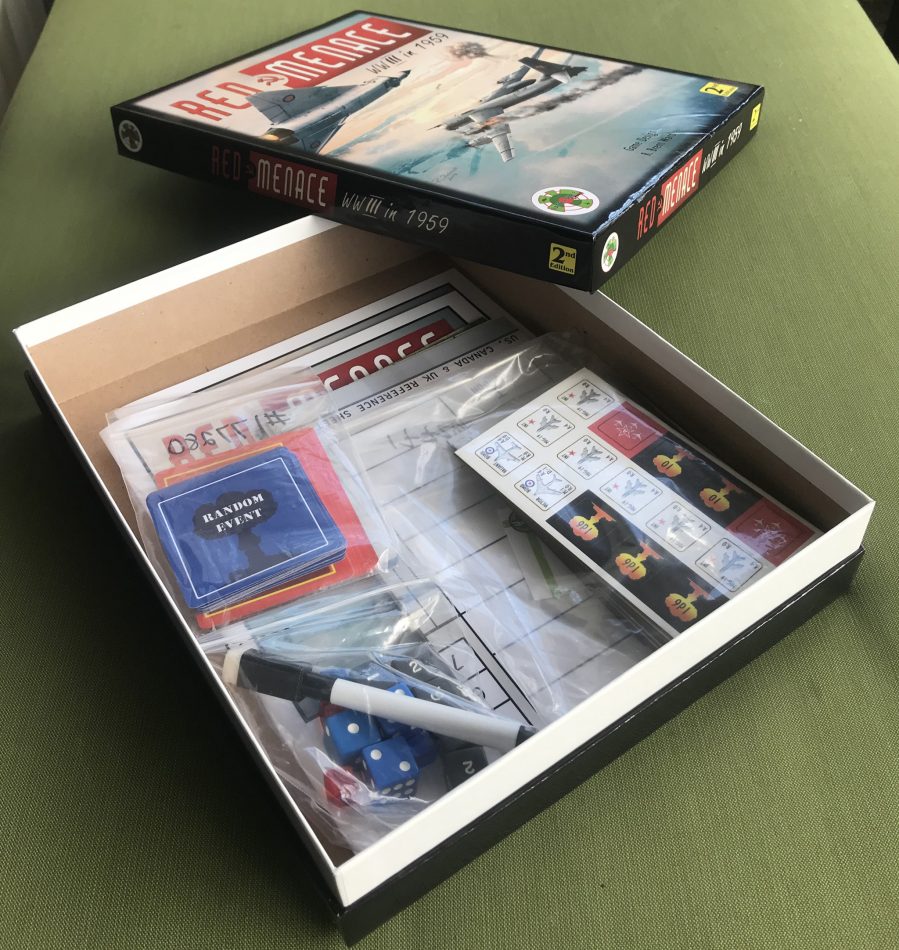
This is a subject that isn’t gamed very often, and Red Menace does so in a surprisingly approachable game, while still managing to include a lot of history that will thrill fans of Cold War aviation. The variable enemy routes keep replayability high, even if it is slightly at the expense of some realism. I do wish that the designer would’ve looked at even a 2d6 attack system (or a possibility to roll 2d6 and keep the higher for sufficiently advanced systems), but I don’t consider that a deal-breaker. If the worst thing I have to say about the game is grumbling about not differentiating megaton payloads… I’m pretty happy.
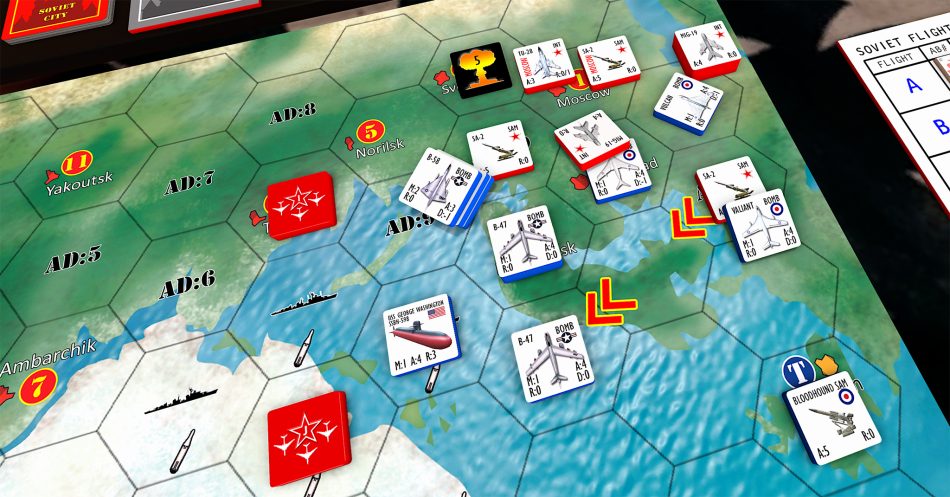
Overall, I liked it. I’d give it 9/10. If you like solitaire board games, the Cold War, the Air Domain, or are interested in a nuclear war, try out Red Menace. Stay tuned for my battle report on this great game.
Ed Note: Some of the above pictures were taken from the Battlespace Games website and feature the board game, Tabletop Simulator & VASSAL versions of the game.
